DANUP-2-Gas Project: Danube Countries United in Introducing Renewable Energy
September 17, 2021 - The DANUP-2-Gas Project, developing renewable energy opportunities for all Danube countries, is set to hold a stakeholder event on September 28 at the University of Zagreb's Faculty of Engineering and Computing (FER).
The beautiful Danube region in Slavonia, apart from boasting natural beauty, also has a lot of historical and archaeological significance. This is evident with the European Commission having recognised the ''Iron Age Danube Route'' earlier this year.
That being said, the Danube river also boasts a political and economic factors, the one that unites all the countries through which the Danube flows. One form of such international cooperation is the DANUP-2-GAS project.
''The Danube region holds huge potential for sustainable generation and the storage of renewable energy. However, to date, this region has remained highly dependent on energy imports, while energy efficiency, diversity and renewables share are low. In line with the EU climate targets for 2030 and the EUSDR PA2 goals, DanuP-2-Gas will advance transnational energy planning by promoting generation and storage strategies for renewables in the Danube region by coupling electric power and the gas sector,'' says the official website of Interreg Danube which is handling the project.
In an effort to achieve their goals, the DANUP-2-Gas project aims to bring together energy agencies, business actors, public authorities, and research institutions to join the cause.
The project started on the July 1 2020, and it will last until the end of 2022. So far, 24 institutions from Germany, Austria, Hungary, Czech Republic, Bulgaria, Romania, Serbia, Slovenia, Slovakia, and of course Croatian partners have begun cooperating for DANUP-2-Gas, united by the geographical fact that the Danube connects them all. The Hrvoje Požar Energy Institute (EIHP), the International Centre for the Sustainable Development of Energy, Water and Environment Systems, and the University of Zagreb's Faculty of Electrical Engineering and Computing (FER) are the project's Croatian representatives. Check out the full list of partners in the project here.
As (EIHP) reported on its website, September 28 will be an important date for the DANUP-2-Gas project as FER will hold a stakeholder event from 09:30 to 12:30, the lectures held in English will explain the potential of the project, as well as the uses and benefits of renewable energy in the hope of encouraging more support.
The event is imagined as a hybrid event, being held partly online and partly in person, but as EIHP warns, there is a risk of the event ending up being held entirely online, depending on the epidemiological situation.
''Based on the platform developed during the DTP project ENERGY BARGE, it will incorporate all pre-existing tools and an atlas, mapping previously unexamined available biomass and energy infrastructure. Further, a pre-feasibility study utilising an optimisation tool for efficient hub design will identify suitable locations for sectors coupling hubs and a combination of two idle resources in the Danube region.
The unused organic residue (e.g., straw) will be processed to biochar for easy transport along the Danube river and as the basis for synthesis gas generation. Adding hydrogen produced from surplus renewable energy allows for the upgrading of this syngas to a renewable natural gas. This will enable the storage of surplus energy in the existing gas distribution grid, increasing energy security and efficiency. All of the resources required for this process are available in the Danube region and the ten partner countries,'' the Interreg Danube website stated, elaborating the positive changes it is attempting to achieve.
Learn more about Croatian inventions and discoveries from Tesla to Rimac on our dedicated TC page.
For more about science in Croatia, follow TCN's dedicated page.
Croatia-Slovakia Scientific Cooperation: Conference in Zadar Continues Academic Friendship
June 30, 2021 - In 2019, an agreement was reached on the start of the Croatia-Slovakia scientific cooperation. The June 18 conference held at the University of Zadar presented the current progress in that agreement.
Along with countries such as Serbia, Slovenia, and Northern Macedonia, Croatia is a south Slavic country. The former Socialistic Federation of Yugoslavia got its name because of southern Slavs, a branch of Slavs, ethnolinguistic groups that arrived in Europe along with many other groups in what history remembers as the „Migration Period“, when Europe was dominated by the Western Roman Empire.
Other Slavic countries include Russia, Poland, Bulgaria (also south-slave, but not part of Yugoslavia), Czech Republic, Ukraine, Belarus, and also West Slavic country, Slovakia.
Sharing ethical and cultural heritage and diplomatic relations (formed on March 1, 1993), saw the intellectual cooperation with Slovakia raised on a high level and produced so much material, it required an entire scientific conference.
As reported by Ivo Pilar Social Research website, June 18 saw Zadar University host a conference „Intellectual relations of Croatia and Slovakia“, prepared by Slovakian-Croatian Board for Humanistic Sciences lead b professor Martin Homza from Comenius University in Bratislava and Ivo pilar Social Research Institute headmaster dr. Željko Holjevac.
The conference was supposed to be held last year but was canceled due to coronavirus, and the 2021 edition was managed in a hybrid model of the event, mixing live and online ways for participants to meet. Twelve Slovakian and Croatian scientists reported on the theme, and key Slovakian and Croatian players on the subjects of education attended and made speeches at the opening ceremony. This includes professor Zvjezdan Penezić, Zadar University's vice-chancellor. Peter Susko, Slovakian Ambassador in Croatia, Marián Zouhar, dean of the Bratislava's Faculty of Humanities and Social Sciences, Staša Skenžić from Croatian Ministry of Science and Education, as well as Martina Klofáčova from the Slovakian Ministry of Science and Education.
„Slovakian-Croatian Board for Humanity Sciences is active since 2019 as part of the program of collaboration between two ministries for science and education with the goal of developing bilateral scientific and educating activities in the field of history, linguistics, Latinism, art history, ethnology, and archaeology“, informed Ivo Pilar Social Research Institute about the program goals.
Is there a Croatian diaspora in Slovakia? Yes. You can learn more about the Croatian diaspora on our TC page.
For more about science in Croatia, follow TCN's dedicated page.
Exhibition on Pejačević Noble Family and Croat-Slovak Ties Opens in Vienna
ZAGREB, October 5, 2019 - An exhibition entitled "The Pejačević family and cultural and historical ties between Croats and Slovaks" opened at the Croatian Centre in Vienna on Friday evening.
The exhibition, open until 20 October 2020, features photographs and inscriptions in Croatian, Slovak and German telling the story of the Croatian noble family and Slovak settlers in the Našice area of eastern Croatia. It provides a cultural, historical and political context for several stages of Slovak settlement, which began in the mid-18th century, and the support settlers received from the Pejačević family. The Slovak settlers contributed to the development of the Našice area by clearing forests and working wood on the land owned by the Pejačević family.
The Pejačević family took an active party in the social, cultural and political life of Croatia for two and a half centuries. Notable members of the family included viceroys Ladislav and Teodor and composer Dora Pejačević.
Croatian Ambassador to Vienna Vesna Cvjetković said that the Slovak minority was one of 22 ethnic minorities in Croatia, nurturing their culture and customs and enriching Croatia.
The director of the Slovak Cultural Centre in Našice, Sandra Kralj Vukšić, said that the exhibition was a token of gratitude to the Pejacević family for everything they had done for the Slovaks in Croatia.
More culture news can be found in the Lifestyle section.
Lessons from Slovakia: Mate Rimac on Croatian Car Industry Potential
September 14, 2019 - Why does Croatia have no car industry to speak of? Is there any potential? That man Mate Rimac thinks so. A look at what is happening in Slovakia.
The Facebook post which has made me smile the most this month so far came from Mate Rimac. The electric car supremo was celebrating the latest success of his Greyp bike:
The Greyp G6 is the world’s most innovative e-mountainbike. Officially. Designed and made by 70 girls and boys in some little place called Sveta Nedelja in Croatia. Enjoy it all!
I have met Rimac three times and he has always been very complimentary about TCN. The last occasion was at the recent Entrepreneurial Mindset conference in Zagreb, where he was kind enough to come over and say hi to his 'favourite fat Brit'. It does not take long to be in his company until you are infected by his positivity and his almost childlike enthusiasm for what he is doing and achieving. One can only imagine how you process that incredible success in such a short space of time, but young Rimac comes across as very grounded and focused. And he really does wonder at the ability of 70 girls and boys in a small town in Croatia and their ability to design and make the most innovative e-mountainbike in the world.
As just one of their products...
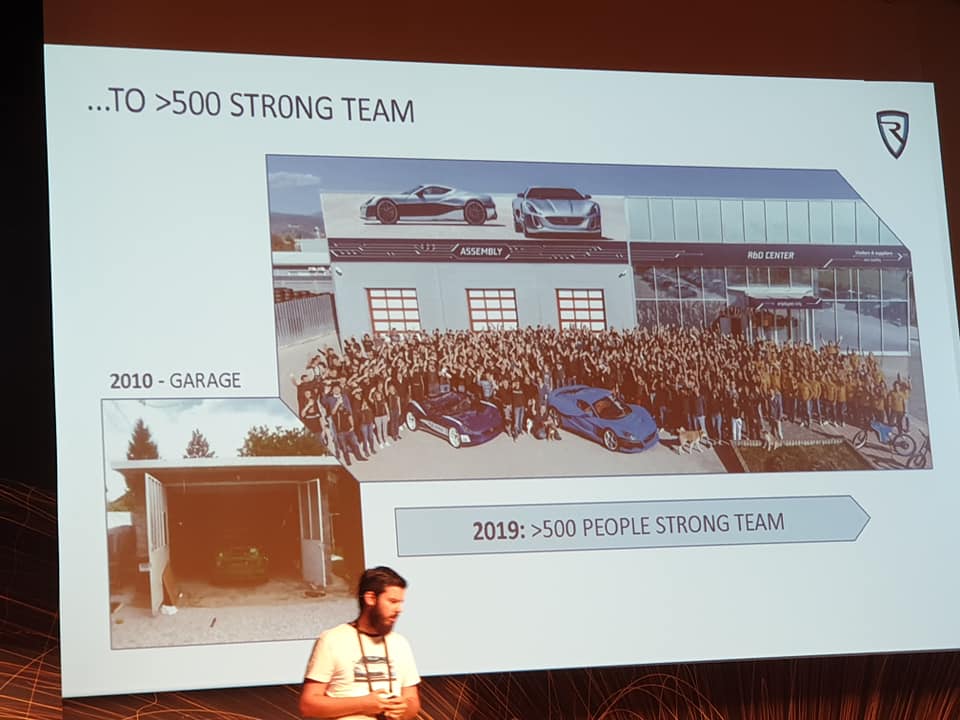
Listening to Rimac speak about his entrepreneurial journey was arguably one of the highlights of the conference for all, but as his very impressive presentation went on, I found myself asking the question - what if we replaced the word 'Rimac Automobili' with 'Republic of Croatia'?
Rimac was working out of a garage as recently as 2010, not an unfair symbol of the Croatian economy right now. With some great ideas, innovation, dedication, persistence and 48 hours a day of hard work, 14 days a week, that garage has been exchanged for something altogether more impressive, as you can see above. Is there a way that the Republic of Croatia could emulate the Rimac trajectory?
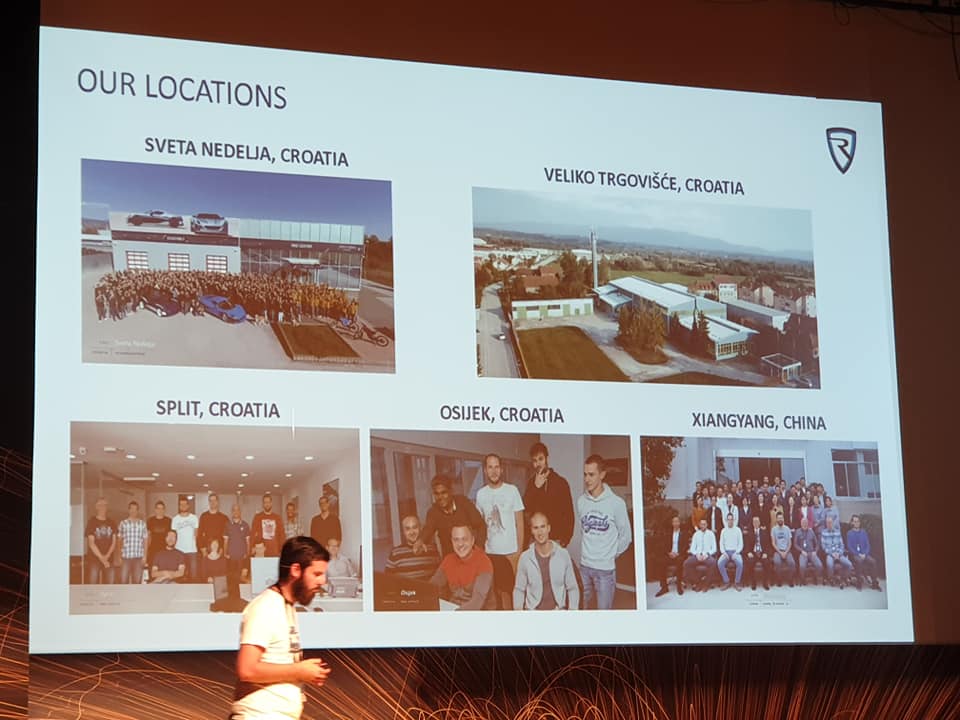
In just 9 years, that garage has expanded considerably. Is there a component which could be injected into the Croatian economy which could push it in the same direction, if not to the same levels of success, then at least somewhere on the way?
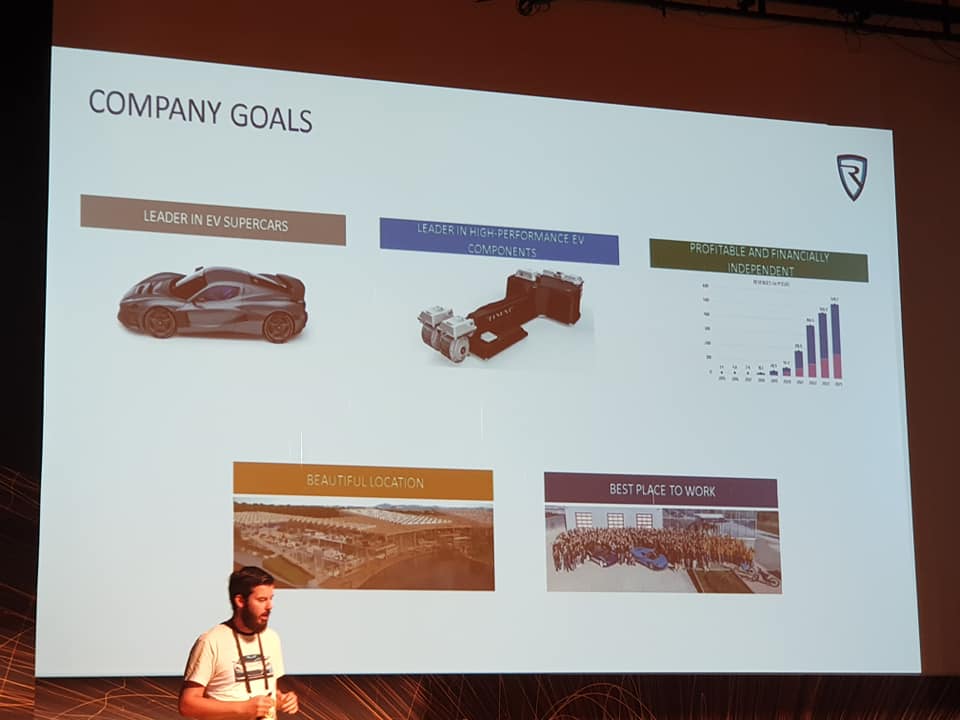
A country with impressive and achievable goals such as Rimac Automobili has set itself?
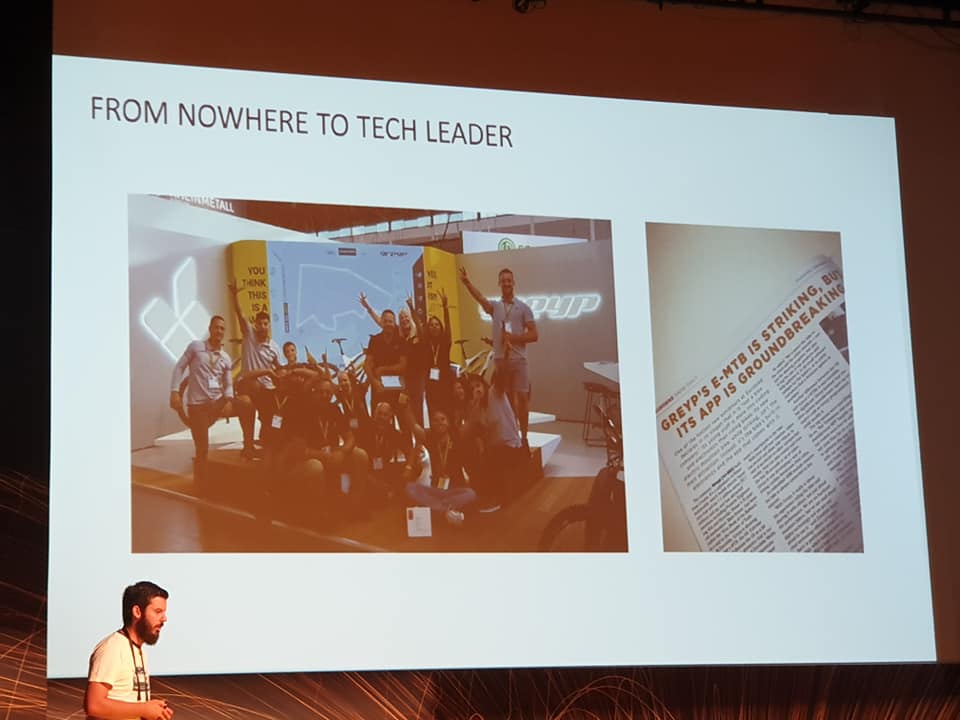
Because if a tiny company can go from nothing to being a global leader in 9 years, why can a country not follow suit in certain aspects, especially if it has support and open doors.
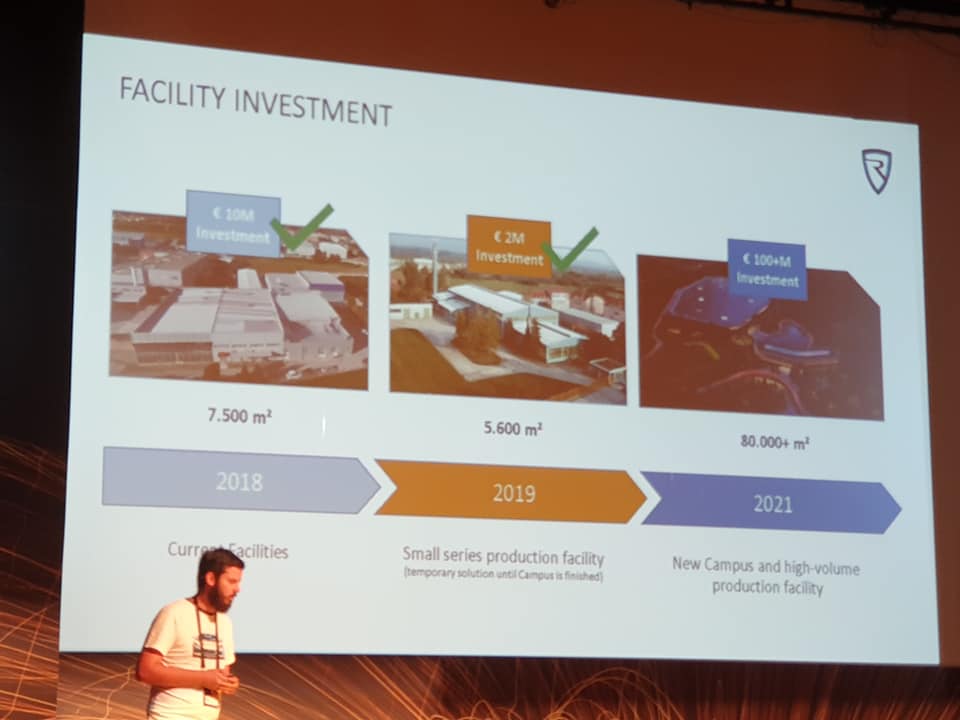
Croatia 2.0. A country looking forward, not back, with defined goals. The Rimac garage of 2010 will see quite an upgrade by 2021.
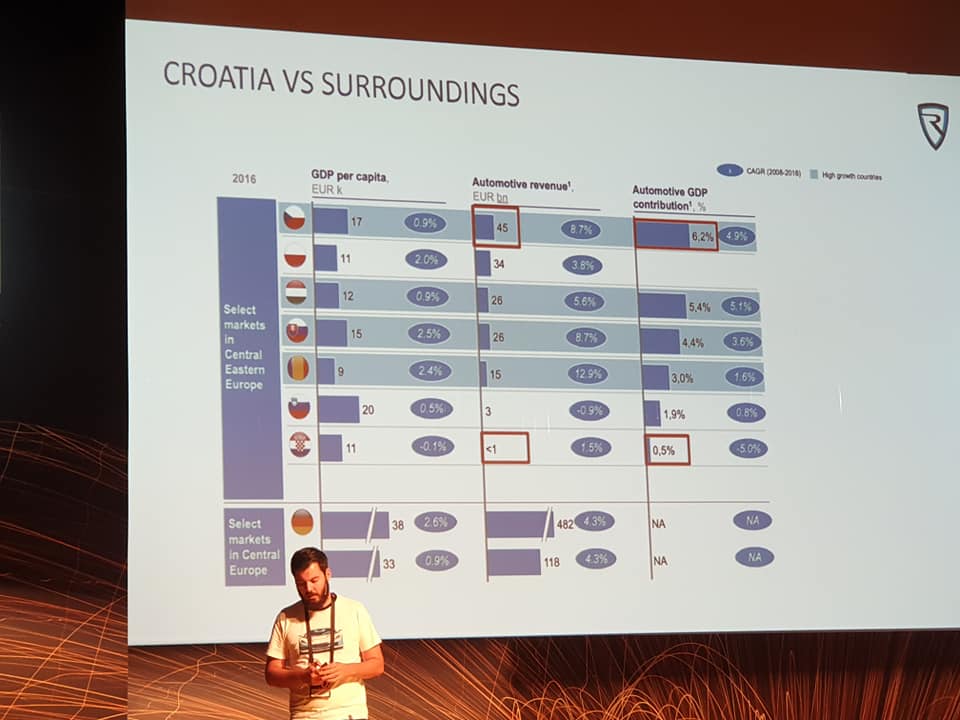
And so began the most thought-provoking part of the Rimac presentation - the lack of a Croatian car industry and the success of neighbouring countries with their automotive industries.
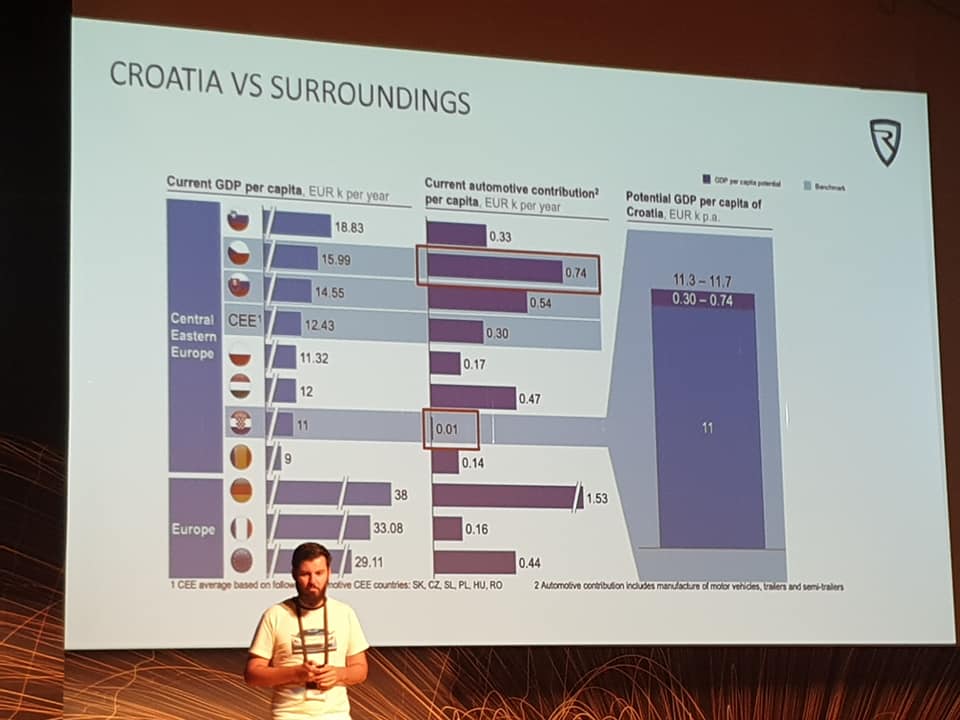
A look at how the automotive industry directly contributes to GDP in neighbouring countries.
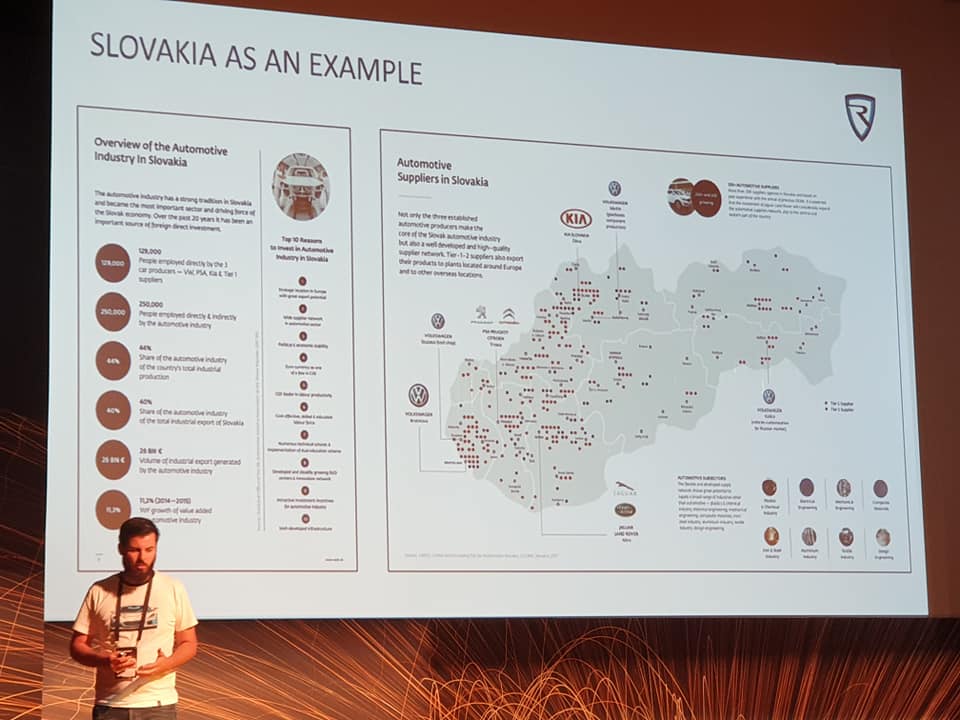
And it not just the factories which make the cars, but the hundreds (from memory he said 500) of companies in Slovakia which produce parts for those vehicles. Jobs all over the country.
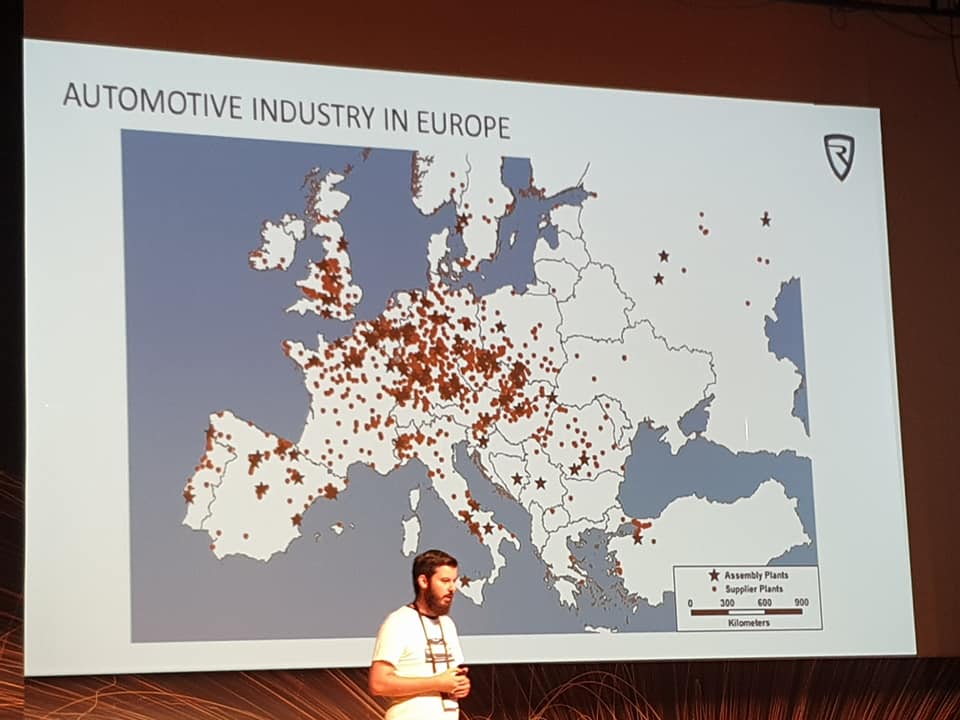
A map of the automotive industry in Europe. Guess which country is missing out? Sales for Rimac cars may start at $1 million for Concept_One, but they have produced less than 20 cars in total so far, as far as I am aware.
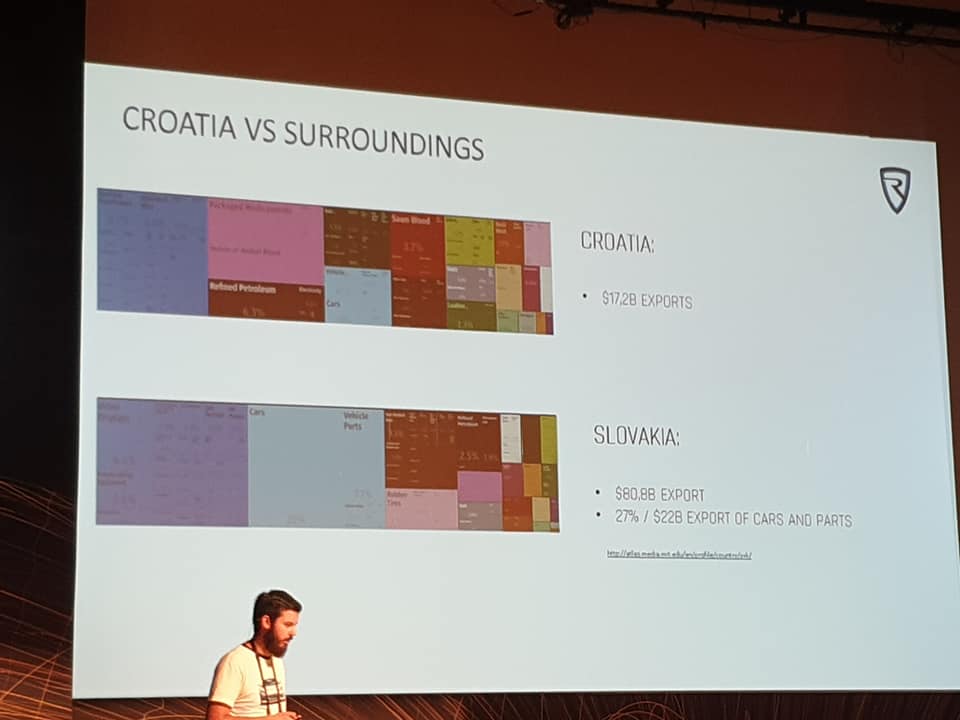
According to Rimac, Slovakia's exports of cars and parts ($22 billion) exceeds Croatia's entire foreign exports ($17.2 billion).
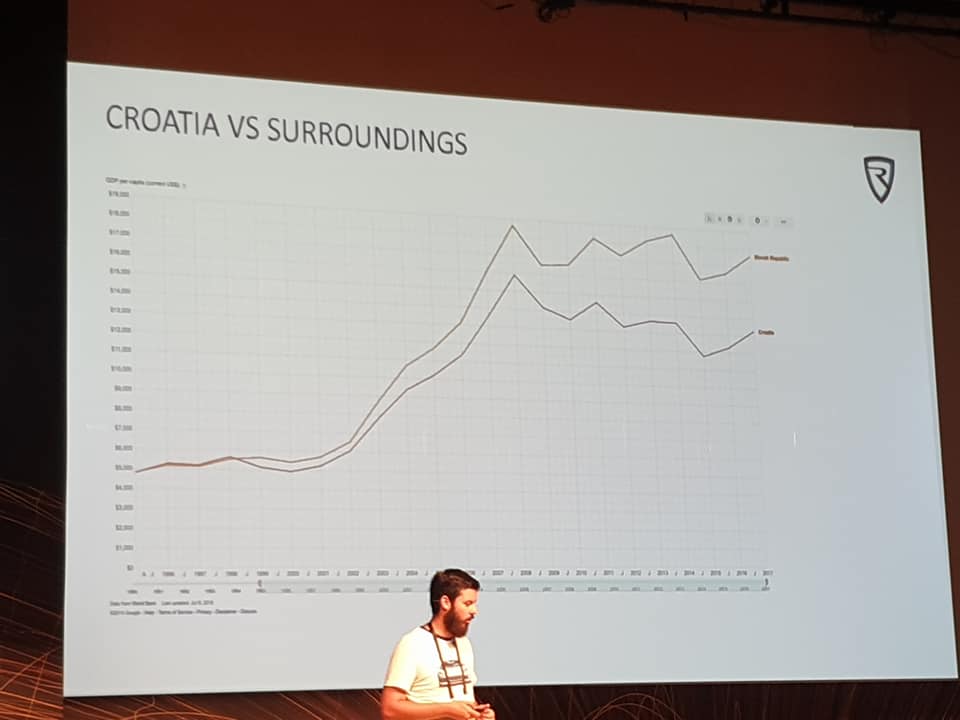
Slovakia versus Croatia over time.
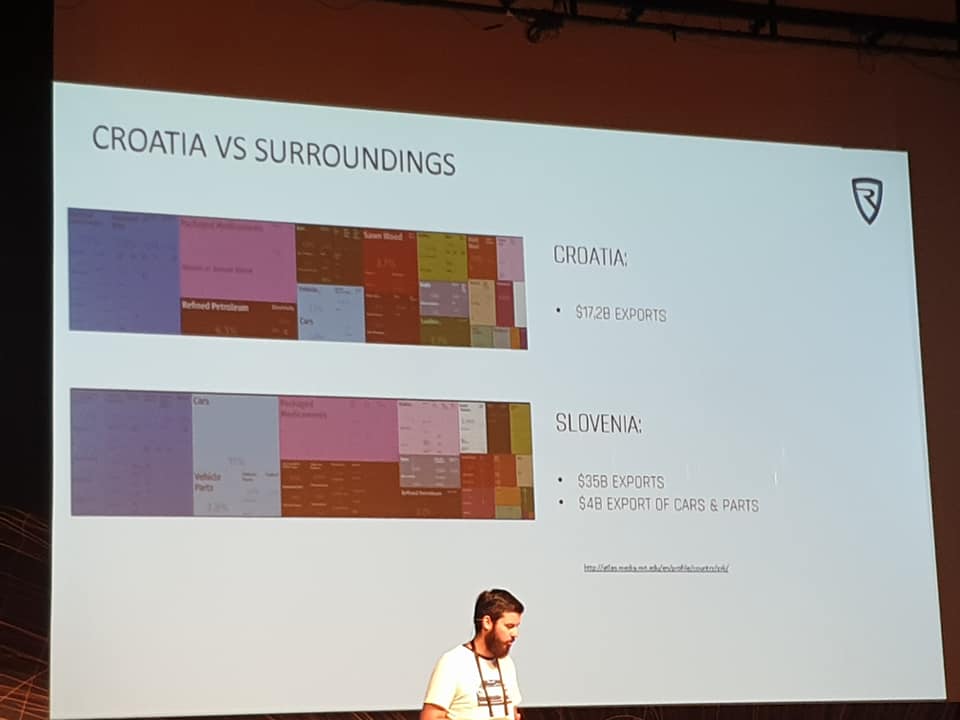
Tiny Slovenia to the west of Croatia, with double Croatia's exports, including $4 billion from the automotive industry.
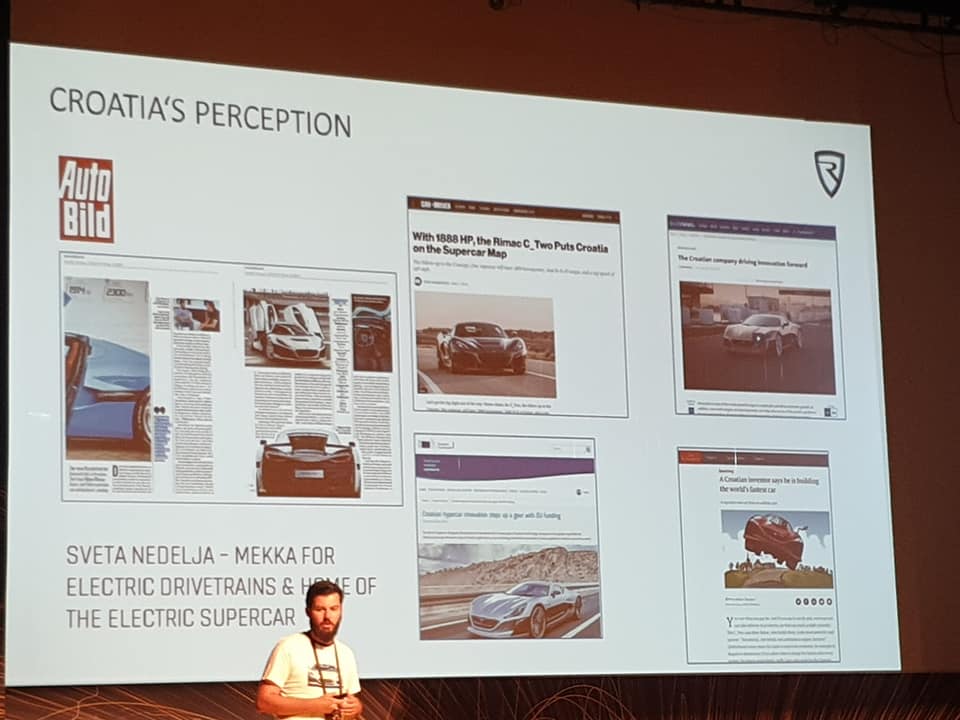
And yet, due to the stunning success of one small company in Sveta Nedelja, the perception of Croatian as a car-producing country is one of global excellence.
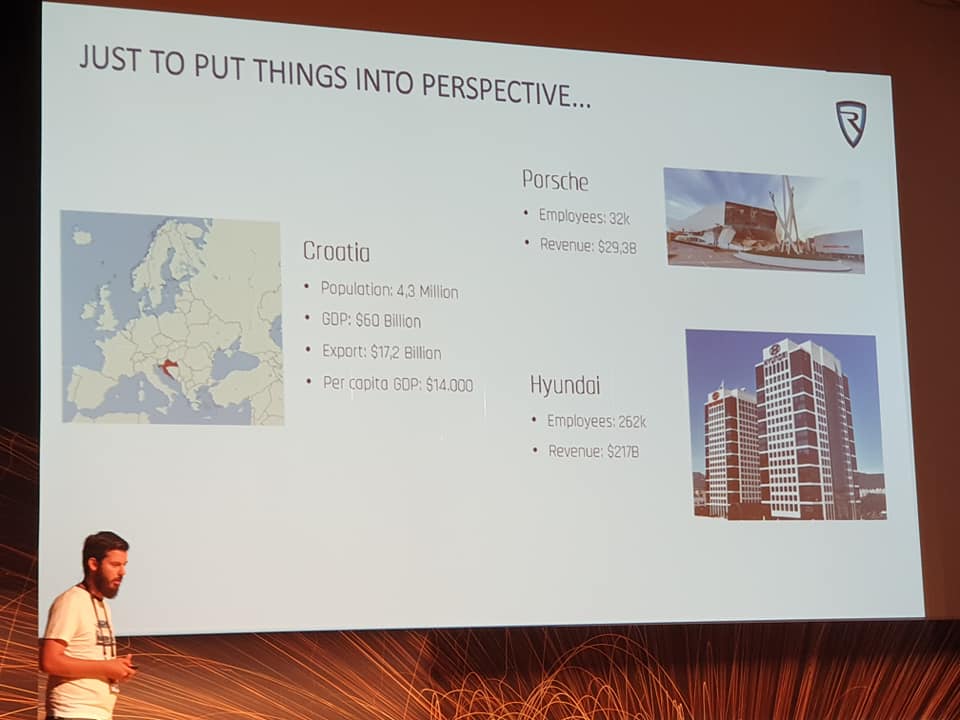
For a boy working out of a garage just a few years ago, Rimac has attracted some pretty awesome investors in his company, including Porsche and Hyundai. And their numbers combined dwarf Croatia's entire GDP.
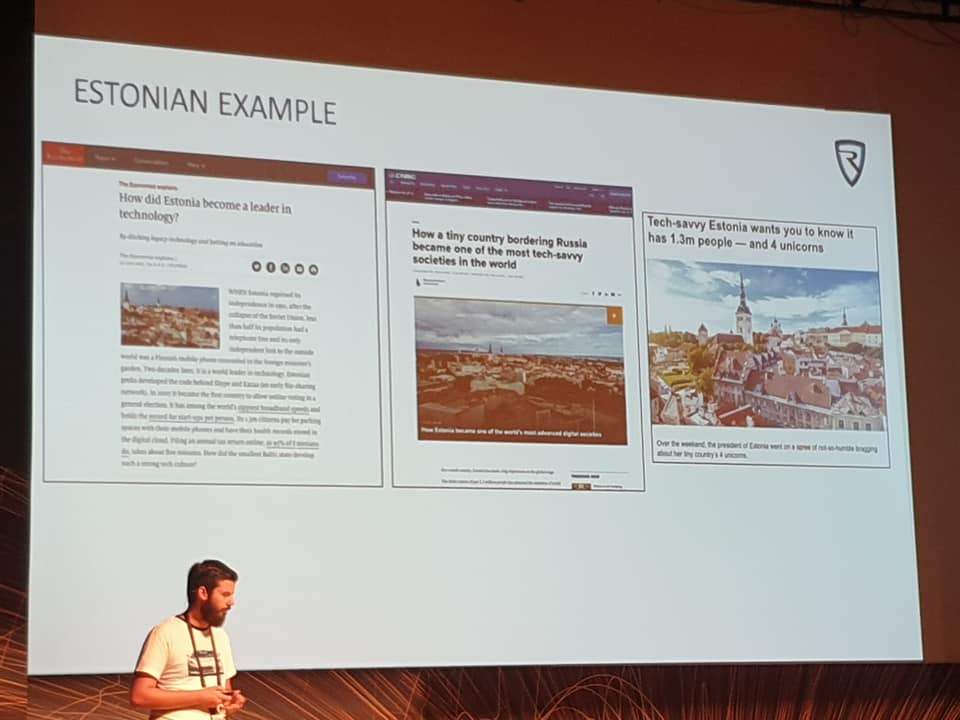
Rimac also looked at the Estonian example, where their digitalisation excellence has transformed the economy and made it a digital and innovation hub. Just putting public administration online has saved the equivalent of 2% of GDP, as we learned in Lessons from Estonia: Farewell Uhljebistan, Welcome to the Future?
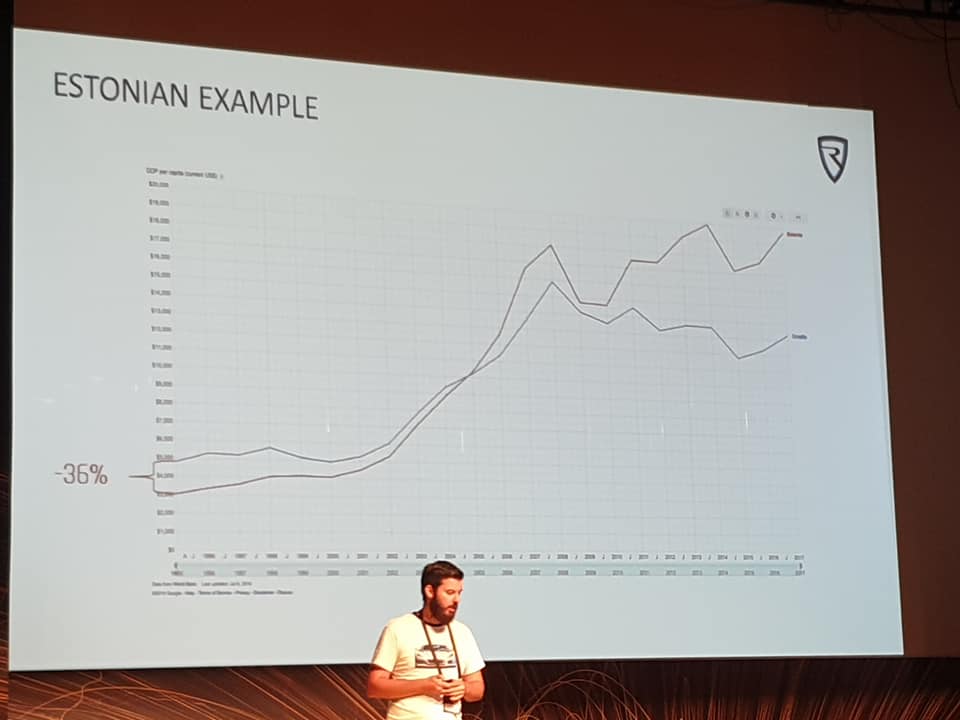
And like Slovakia, Estonia is outperforming Croatia. in recent years. Both Slovakia and Estonia have seen their economies having to adapt from socialism to capitalism. Their leaps ahead of Croatia have come in the last five years, not the last 25, a recent phenomenon.
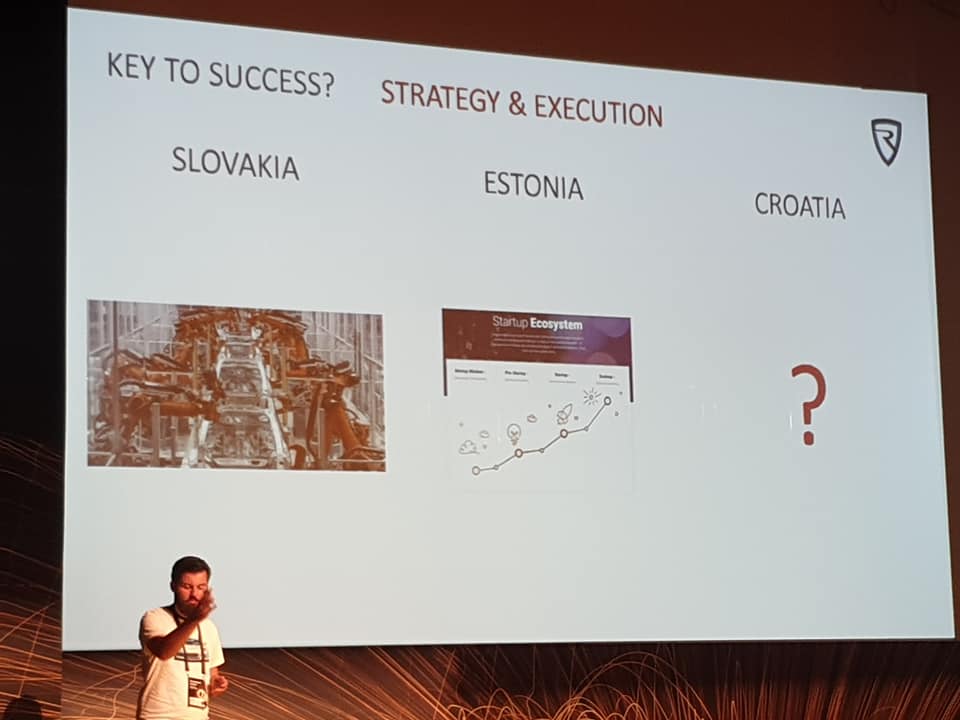
The car industry for Slovakia, digitalisation and innovation for Estonia. What is Croatia's strategy and route to success?
"The key to success in the automobile industry is a country's strategy and vision of what it wants to achieve. I believe that now is the right time for Croatia to join the so-called third wave of investments in the car industry because we missed out on that opportunity in the last ten years," said Rimac.
He said that the first investment wave in the car industry caught the Czech Republic, Poland, Hungary and Slovakia, the second caught again Slovakia as well as Romania, while the third one could include Croatia, in which all of his partners were interested as were representatives of Hyundai and Porsche.
Will anything happen? Can Croatia move out of that 2010 garage and take advantage of the opportunity? Can it work with and build on the success of one small company whose outstanding success has put the Croatian car industry on a global level despite only producing less than 20 cars? If one small company can bring in over 100 million euro of investment from the likes of Porsche and Hyundai, what is the potential for the Republic of Croatia, not only to produce cars, but also starting other businesses to produce the various parts all over the country?
Wouldn't it be nice to have a major electic car production facility in the country which is home to the birthplace of Nikola Tesla, something inspired by the man whose 9-year journey from a car in a garage has made Croatia a global superstar in an industry it did not have a decade ago?
You can watch the Mate Rimac presentation in full below.
For the latest news on Mate Rimac, follow the dedicated TCN page.
Slovakia Supports Croatia's Schengen Area Entry
ZAGREB, December 4, 2018 - Slovakia believes it is very important to strengthen the external borders and supports Croatia's Schengen Area entry, Prime Minister Peter Pellegrini said on Tuesday after meeting with Croatian Prime Minister Andrej Plenković, voicing confidence that Zagreb would achieve that goal.
The two prime ministers met in Zagreb as part of a Central European Initiative (CEI) summit.
I'm convinced that Croatia already meets all the criteria, both technical and formal, and I believe Croatia will succeed in entering Schengen, Pellegrini told reporters, saying he was glad that Slovakia had contributed to that with its experts.
Plenković said Slovakia's support for "Croatia's ambition to become part of the Schengen Area is very clear and firm." "We also want to meet the criteria for the euro area. Those two close integration formats at European Union level are very important for Croatia."
Pellegrini voiced hope that Croatia would enter the European Exchange Rate Mechanism (ERMII).
Slovakia never regretted entering the euro area. That's a very successful story and, because we have the euro as our currency, we mainly do business with euro area countries. That makes doing business a lot easier, he said, adding that one should not be afraid of adopting the euro.
Plenković said Croatia and Slovakia had excellent cooperation in NATO, the EU and other initiatives, and highlighted the economic cooperation. "Our trade has reached 400 million euro and more than 500,000 Slovak tourists have visited the country."
The two prime ministers said they were glad they had managed to agree on the next European budget.
It was also thanks to Prime Minister Plenković that we managed to sign a joint declaration on that plan last week in Bratislava as part of 14 EU countries, said Pellegrini, referring to a Friends of Cohesion meeting.
"Reducing inequalities among EU member states is quite high on our list of priorities, so the cohesion policy and agriculture are a common priority of both Slovakia and Croatia," said Plenković.
He and Pellegrini also talked about the successful cooperation in the economy, notably tourism, defence, industry and energy.
Croatia is our constant partner and will certainly remain so, said Pellegrini, while Plenkovic said the CEI market was "very important for Croatia" as it accounted for 55% of its trade.
They supported the countries wishing to join the EU, with Pellegrini warning that if aspirants were denied firm and clear support, other countries such as China, Russia and Turkey could step in.
For more on relations between Croatia and Slovakia, click here.
Croatian and Slovak Police Cooperate in Tourism and Migration Issues
ZAGREB, May 17, 2018 - Croatian Interior Minister Davor Božinović met with his Slovak counterpart Denisa Sakova and talked about the Schengen Area, migration problems and how Croatia and Slovakia have organised their crisis management services.
Slovakia Supports Croatia in Schengen and OECD Accession
ZAGREB, February 19, 2018 - As a member of the Organisation for Economic Cooperation and Development (OECD) and the Schengen area of passport-free movement, Slovakia wants to see Croatia join the two organisations, Slovak Foreign Minister Ivan Korčok said on Monday in Zagreb, where he arrived to share his country's experience in the presidency of the EU.
Croatian Companies Looking to Do Business in Slovakia
Croatian President on official visit to Slovakia.


